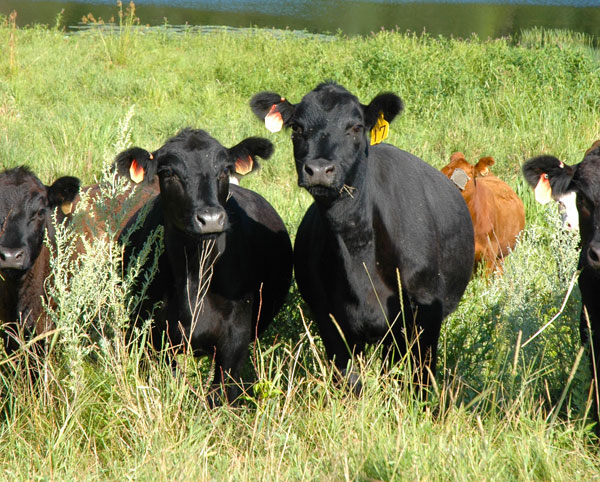“At this point, I see little reason why the cow herd should not rebuild to at least the level of the truncated expansion in 2007-2008…roughly 32.5 million head," says Derrell Peel, Oklahoma State University livestock marketing specialist.
April 4, 2015

If the weather and markets cooperate, Derrell Peel, Oklahoma State University livestock marketing specialist, sees the nation’s beef cow herd growing to 32.5 million head or so by about 2019, mostly in the Southern Plains.
“The question of how much growth (beef cow herd expansion) is needed will depend on domestic and international market conditions over the next few years as herd growth occurs. It will also depend on things such as carcass weights that will determine total beef production relative to slaughter rates,” Peel says, in his weekly market comments. “At this point, I see little reason why the cow herd should not rebuild to at least the level of the truncated expansion in 2007-2008…roughly 32.5 million head. That would suggest another 2.8 million head beyond the January 2015 level. This implies total herd growth of nearly 9.5% in the next few years. Time and market conditions will, however, determine exactly what the size potential is for the industry.”
At an annual expansion rate of 2.1%—the rate of expansion in 2014—Peel notes it would take until 2019 for the cowherd to grow beyond 32 million head.

70+ photos showcasing all types of cattle nutrition
Readers share their favorite photos of cattle grazing or steers bellied up to the feedbunk. See reader favorite nutrition photos here.
“In the last complete cyclical expansion from 1990-1995, the average annual herd growth rate was 1.4%,” Peel explains. “Leaving out the slow first year and tapering off the last year, the principal four years of expansion during this period averaged 2% per year. In the current expansion, a single year of faster growth is very possible but it is unlikely that an annual growth rate much above 2% could be maintained for two or three years consecutively. There are, however, a number of regional factors that could slow expansion. An average herd growth rate of 1.5% would take until 2021 to exceed 32 million head of beef cows. The question of how long is related to the question of where herd growth will take place.”
Peel sees the lion’s share of expansion occurring in the Southern Plains (Kansas, Oklahoma and Texas), a region representing 42% of the total herd decline between 2008 and 2015. One reason is that herd liquidation in other regions like the Midwest and Appalachian states was due mostly to acres of forage transitioning to crop production.
“Lost pasture and hay production in these regions is not likely to return quickly, if ever. The beef cow herd in these regions will grow but is unlikely to rebuild to previous levels,” Peel says.
Mother Nature, of course, will ultimately determine the extent and timing of the opportunity.
“Parts of the region (Southern Plains) are still experiencing severe to exceptional drought conditions,” Peel explains. “The 6.2% herd expansion in 2014 in the Southern Plains may be difficult to maintain if drought conditions do not improve significantly. Moreover, herd expansion could be halted or reversed if drought conditions redevelop in the region.”
You might also like:
What's the value of a bred beef heifer in 2015?
What you need to know about cattle ingesting net wrap
9 new hay-making tools for the 2015 forage season
About the Author(s)
You May Also Like





